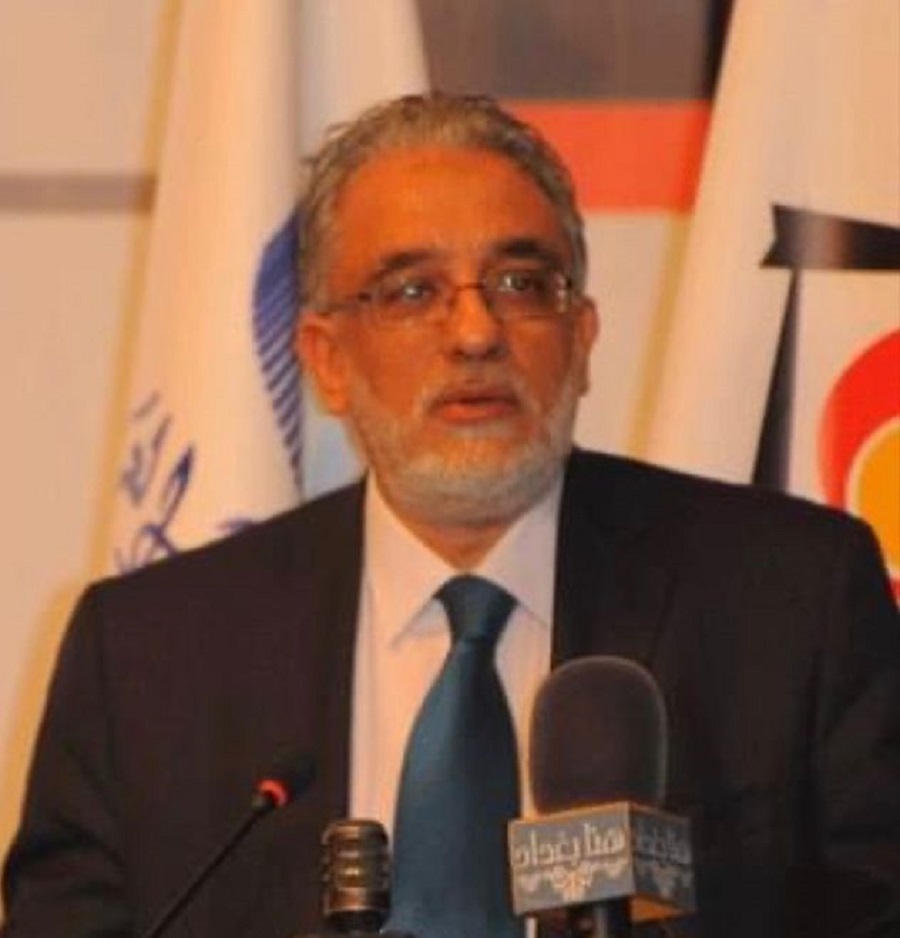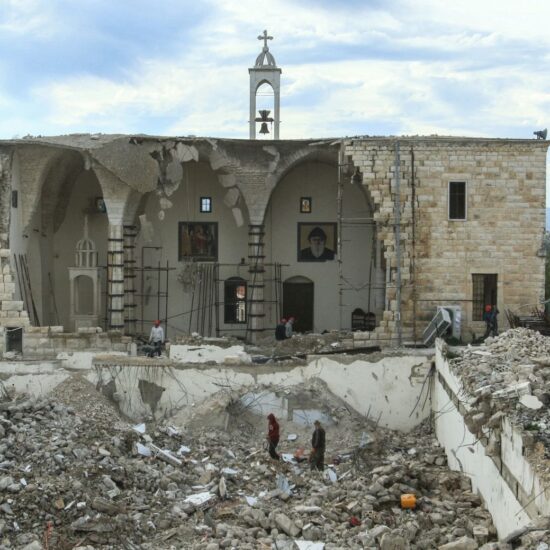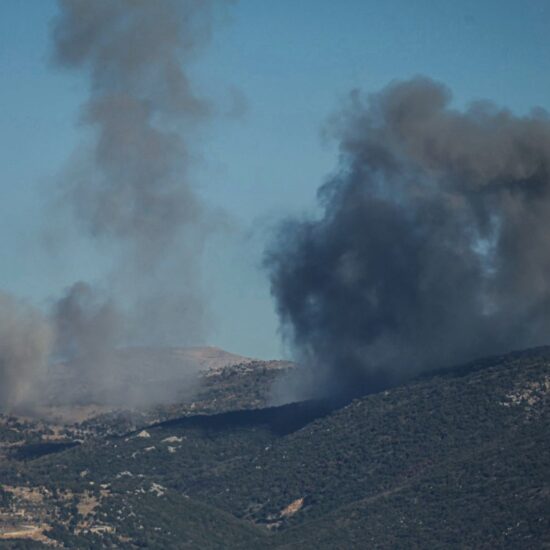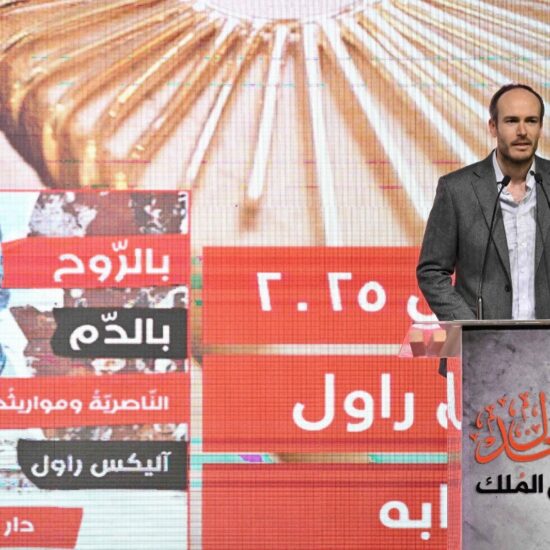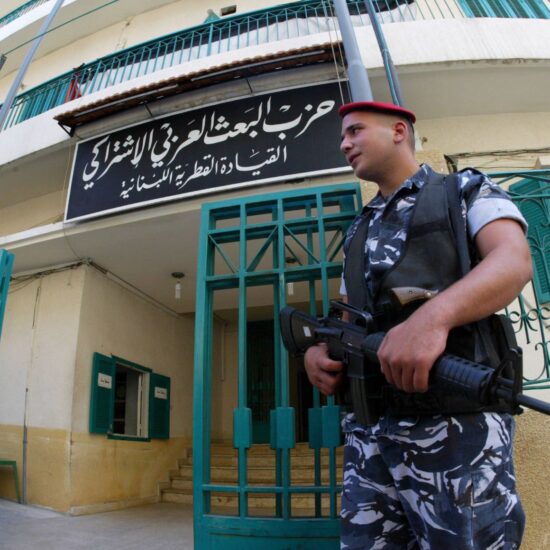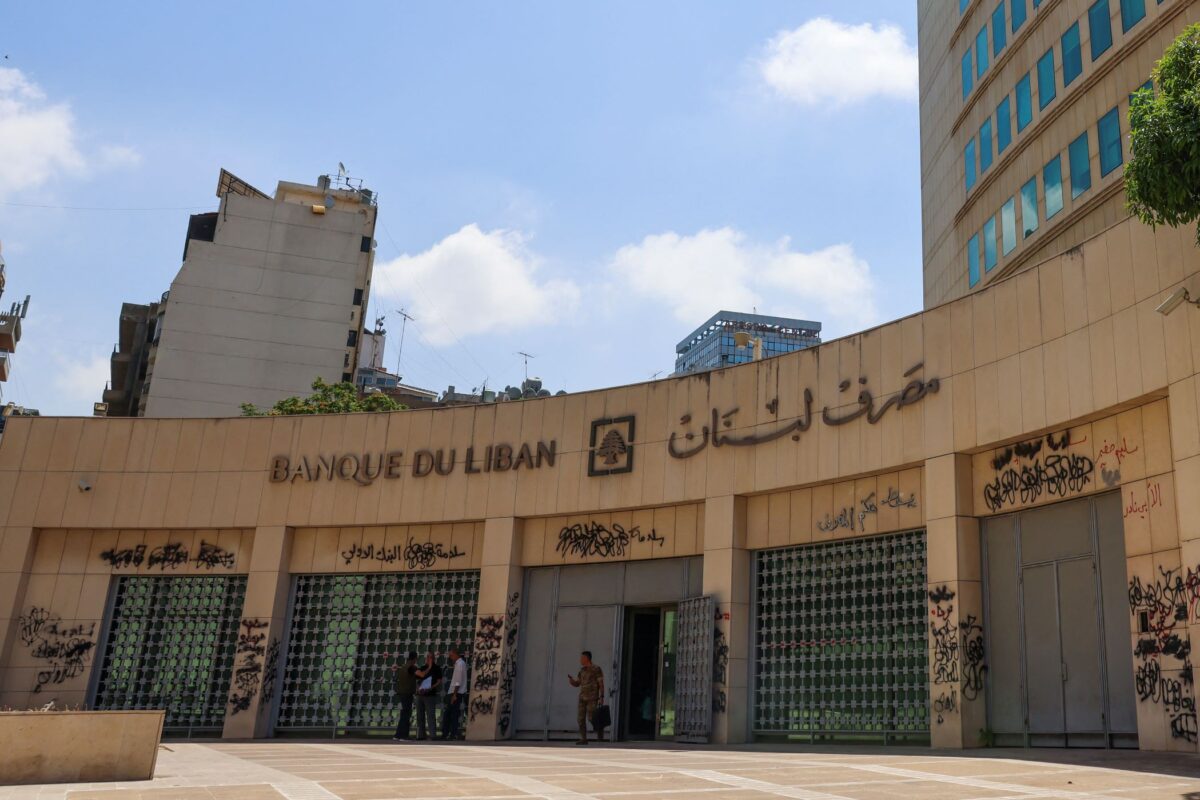
BDL records a negative gap of 53 billion dollars as physical losses are estimated at 8.5 billion
Figures released by the Central Bank of Lebanon (BDL) denote once more a significant discrepancy between the dollar-denominated deposits in Lebanese banks and the actual dollar reserves. These indicators ring the bell denoting that a banking crisis is in the making. Experts believe that politics is still governing the rate of the Lebanese pound denominated exchange rate as a small group of politicians is intentionally maintaining an artificially high market equilibrium, despite its negative consequences for the economy and citizens. The matter is of prime significance since the BDL needs to have a corner place in Lebanon’s expected reconstruction plan as a new role for Lebanese banks at the onset of an expected massive reconstruction plan for Lebanon. The cost of physical damages and economic losses due to the conflict in Lebanon is estimated at $8.5 billion. In detail, the damages to physical structures or assets amount to $3.4 billion; and that of economic or income losses to $5.1 billion over a year from the cut-off dates, these were recorded mainly to last October. The report projects that the ongoing conflict will reduce Lebanon’s 2024 real GDP growth by at least 6.6%, resulting in a 5.7% contraction. This significant decline adds to five years of sustained economic contraction, which has already exceeded 34% of real GDP.
The conflict has had a profound impact on the people of Lebanon. Over 875,000 individuals have been internally displaced, and an estimated 166,000 have lost their jobs, resulting in a loss of $168 million in earnings, the WB report estimates.
It emphasises that these estimates may be conservative, as the conflict is ongoing and damages are likely to continue to accumulate beyond the time frame considered in the assessment.
Current monetary policy
The devaluation and manipulation have led to hyperinflation, reduced purchasing power, and a loss of confidence in the Lebanese Pound.
In a last-ditch effort to manipulate the market, former governor Riad Salameh flooded the market with dollars, sending the Lebanese lira into a tailspin. The exchange rate plummeted from 140,000 to 90,000 lira per dollar. The government, seizing the opportunity, fully dollarized the economy, rendering the lira obsolete. Today, the largest bill, a 100,000 lira note, is worth mere pennies. Furthermore, the World Bank (WB) says that the repercussions of the financial sector’s collapse extend beyond the banking industry, significantly affecting economic growth and business operations.
To add to the drain on reserves, the BDL issued a directive for banks to pay an amount equivalent to two monthly installments at the beginning of November to all Circulars 158 and 166 beneficiaries. BDL further stated that the provisions of these circulars will continue to apply as usual in December.
Credit to the private sector, crucial for economic activity, has dwindled, with firms facing severe constraints on access to finance. The reduction in financial intermediation has led to a decline in the usage of financial services, exacerbating informality and the risk of money laundering. Lebanon’s economy has become increasingly cash based, further heightening risks and hindering efforts to regain trust in formal financial services.
The World Bank estimates that the size of the cash economy has more than doubled between 2020 and 2022 and today accounts for close to 46 percent of GDP or $9.86 billion. Moreover, the crisis has likely exacerbated illicit flows, depriving the country of much-needed resources while enriching a select few, the report said. The smuggling of subsidized goods to neighboring countries has left vulnerable communities deprived and exacerbated socioeconomic disparities.
According to Michel Kouzah a financial advisor in Beirut, “no one needs the Lebanese pound anymore except to pay taxes and fees.” There was serious talk of a full dollarized economy option he told NOW Lebanon. But of course, the stakes are high given the $90 billion in deposits he said. According to Kouzah there is only $9 billion in actual dollars in the entire banking system. Taking into account the gold reserves worth of $18 billion, this will bring total reserves to $27 billion.
Asked what is the real value of the dollar he said, without distributing losses and in order to determine the exchange rate of the lira, he said that converting the $90 billion in deposits into lira at an exchange rate of Lp15,000 and dividing it by the $27 billion in actual dollars in the system, making the exchange rate around 50,000 lira.
To be noted that Bank Audi financial statements at the end of September 2024 reveals that the Lollar deposits at BDL is close to Usd10 Billion. Those were calculated at the rate of 89500 LBP, at the same rate for Lollar customers deposits valued at $12.5 billion. Thus the BDL has recorded a negative gap of $53 Billion.
According to figures released by the BDL, the balance sheet for mid-November 2024 indicates a 11.86% year-on-year decline in total assets, amounting to $93.96 billion. This decrease is largely attributable to a 96.57% year-on-year reduction in other assets. Conversely, the gold account, now comprising 25.18% of total assets, experienced a 30% year-on-year growth, reaching $23.66 billion. In a recent balance sheet revision, BDL has replaced the “foreign assets” item with “foreign reserve assets.” This modification aims to exclusively encompass non-resident and liquid foreign assets.
The issue of Eurobonds again
But does the BDL have any obligation to repay domestic debt in dollars, can debt be decreased through lirafication?
Kouzah believed that the BDL cannot devalue foreign debt and that the is settling Eurobonds unsettled dues. The quiproquo over Eurobonds’ default has been under the subject of much scrutiny also because of the need to tackle international markets on the eve of any reconstruction effort.
Lebanese Eurobonds have exhibited a recent surge in value, with the Blom Bond Index reaching near-decade highs. This uptick was fueled by investor optimism that a potential weakening of Hezbollah could lead to a ceasefire, political stability, and economic reforms, ultimately paving the way for an IMF deal. However, this optimism has waned, and Lebanese Government International Bond spreads have widened significantly. This indicates that investors now perceive Lebanese bonds as riskier, demanding higher risk premiums. The question of the fair value of these volatile bonds remains unanswered. Lebanon’s sovereign debt crisis reached a critical point in March 2020 when the government defaulted on its Eurobond payments. At the time of the default, the total nominal value of these Eurobonds was approximately $31.31 billion, with maturities extending until 2036. Due to the crisis, the trading value of these bonds plummeted to less than 38% of their nominal value.
The default on Eurobonds exacerbated Lebanon’s existing financial crisis, but it was not the root cause. The country had been struggling with a mounting public debt and a deteriorating economy for years. The high debt-to-GDP ratio, which reached 151% in 2000, and the significant portion of government revenue allocated to debt servicing, had raised concerns among creditors about Lebanon’s ability to repay its obligations.
The default on Eurobonds further eroded investor confidence and limited Lebanon’s access to international capital markets. This has forced the government to rely on domestic financing and increasingly burdensome austerity measures, which have had a severe impact on the Lebanese population.
Today, Lebanon faces a unique opportunity to significantly reduce its debt burden. With Eurobond prices plummeting to historic lows, around 7 cents on the dollar, the government has the potential to repurchase these bonds at a fraction of their face value. By investing a relatively small amount, say $1 billion, Lebanon could extinguish a debt worth over $10 billion.
However, this window of opportunity may not last. Delaying action could lead to several negative consequences. Firstly, as the political situation in Lebanon stabilizes and a credible government is formed, it is likely that investor confidence will increase, driving up the price of Eurobonds. Secondly, specialized hedge funds often capitalize on distressed debt, buying bonds at rock-bottom prices and then pursuing legal actions to maximize their returns. If these funds acquire Lebanese Eurobonds, they could potentially initiate legal proceedings to recover a higher value than what Lebanon would have paid during the current low-price period.
Therefore, seizing the opportunity to repurchase Eurobonds at the current low prices is crucial for Lebanon to alleviate its debt burden and improve its financial outlook.
Any positive signs in stats?
Although BDL’s liabilities witnessed a decline, with financial sector deposits, constituting 91.39% of total liabilities, decreasing by 3.35% year-on-year to $85.87 billion by mid-November 2024, still over 90% of these deposits are denominated in US dollars. Public sector deposits, representing 6.4% of total liabilities, experienced a substantial 49.3% year-on-year reduction, reaching Usd6 billion. Currency in circulation outside of BDL, comprising 0.59% of total liabilities, plummeted by 84.88% year-over-year to $558 million, likely as a result of the implementation of the 89,500 LBP/USD official exchange rate.
Until now the new board of the BDL has only produced a “more of the same policy”. However a cancellation of Usd 20 billion illegitimate deposits and the announcement to annul excessive interest paid since 2016 has not reverberated positively on the market. To be noted, moreover, is that Alvarez & Marsal auditing report estimated these excessive interests at $60 billion.
To this, we can add the recovery of funds that were smuggled abroad by politicians and the junta from the beginning of 2019 Kozah believes.
If we take these steps, deposits will be reduced by more than half, and by recovering the smuggled funds, depositors will be spared huge losses, he said.
A Solidere 2 to tackle debt?
A “Solidere like development model” could serve as a model for a new initiative aimed at mobilizing resources and leveraging value to repay deposits, Kozah proposed. By building on the experience and lessons learned from previous projects, the new “Solidere 2” can play a crucial role in addressing the complex challenges of Lebanon’s financial crisis and charting a path toward economic recovery.
The first step in this process is that the new “Solidere 2” can be formed through a cabinet decree that allows for the reclamation of a new area from the sea, creating millions of square meters. The second step is to issue shares to the public that can be purchased with funds in banks. I estimate the market value of “Solidere 2” to be $20 billion, he said.
According to him and as a top priority, transparency and accountability standards must be applied throughout the deposit repayment process. Clear timelines, milestones, and reporting mechanisms must be established to ensure that depositors are kept informed and that funds are distributed fairly and equitably. Any proceeds generated through asset sales or other means should be allocated directly to repaying deposits, with mechanisms in place to prevent mismanagement or corruption.
In addition to repaying deposits, the new “Solidere” can also play a broader role in reviving Lebanon’s economy and infrastructure. By directing funds towards strategic investments, such as job creation programs, small business support initiatives, and infrastructure projects, “Solidere 2” can stimulate economic growth and create opportunities for long-term prosperity.
The key to the success of this endeavor is the participation of all stakeholders, including depositors, government agencies, civil society organizations, and the private sector Kozah believes.
“Solidere 2” can be dedicated to repaying deposits and represents a bold and effective approach to addressing Lebanon’s financial crisis. By mobilizing resources, promoting transparency, and fostering sustainable development, “Solidere 2” can play a crucial role in restoring confidence in the banking sector and laying the foundation for a brighter economic future.
The views in this story reflect those of the author alone and do not necessarily reflect the beliefs of NOW


